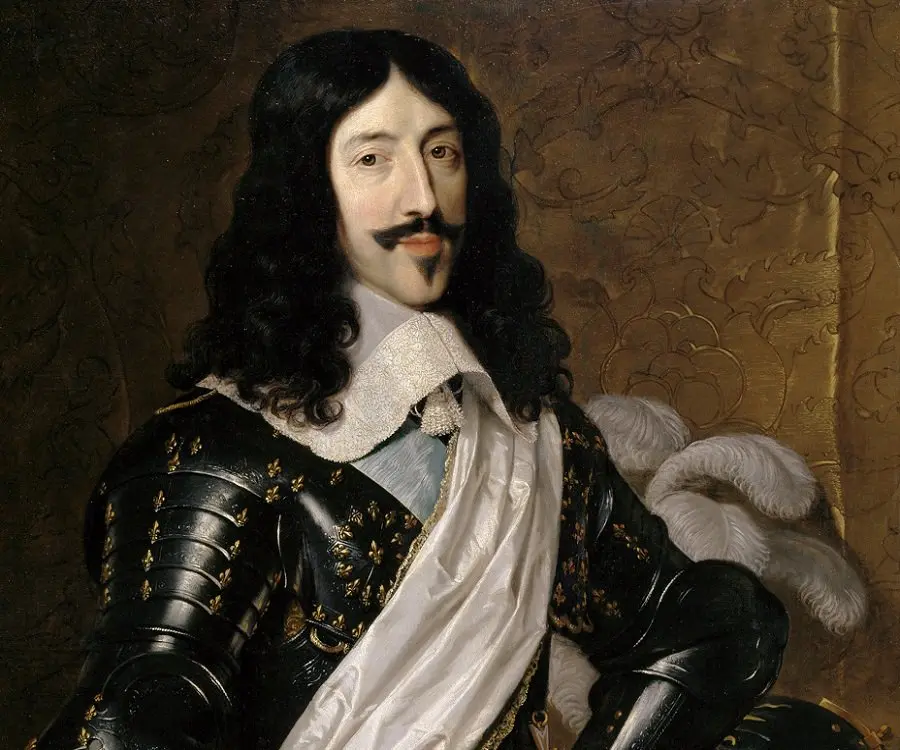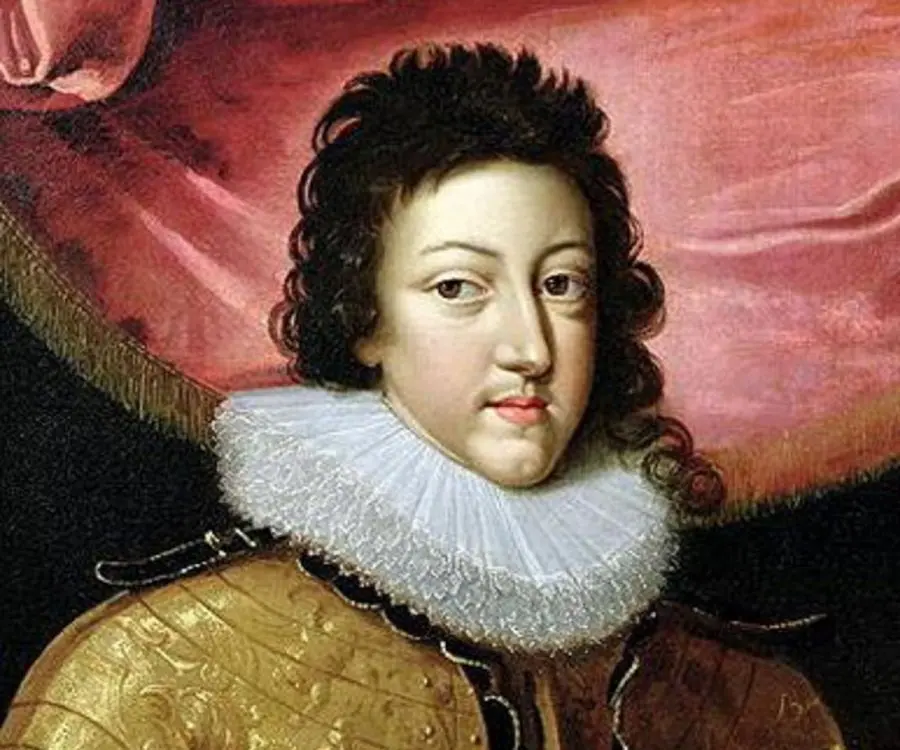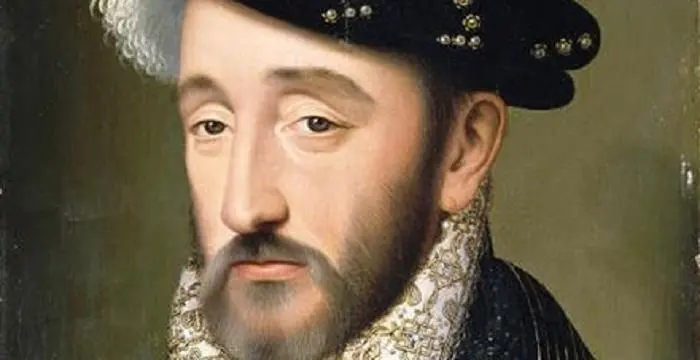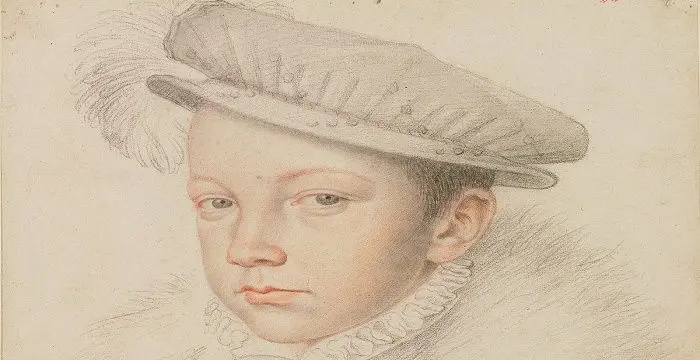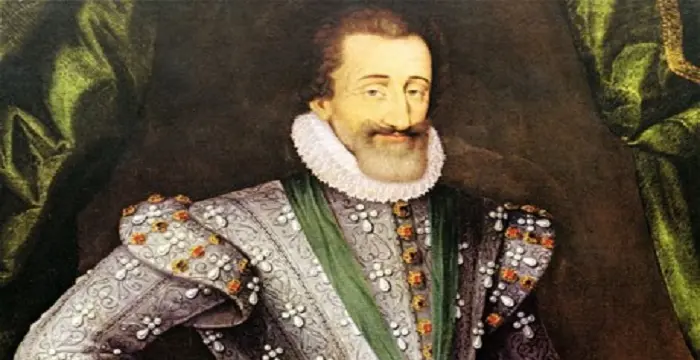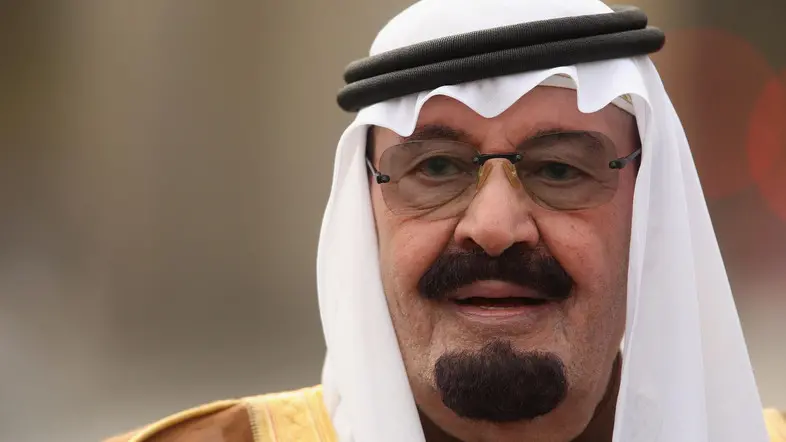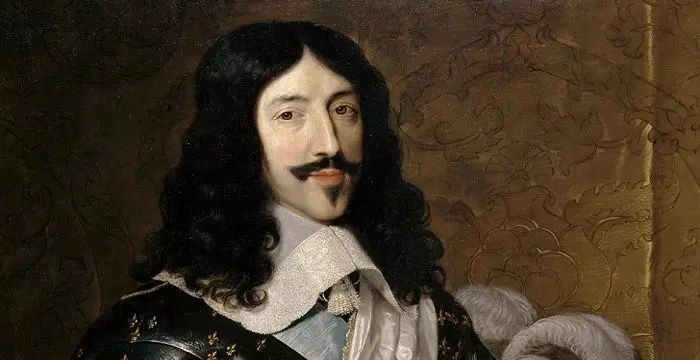
Louis XIII of France - King of France, Timeline and Life
Louis XIII of France's Personal Details
King Louis XIII of France was the second king from the House Bourbon to rule over France
| Information | Detail |
|---|---|
| Birthday | September 27, 1601 |
| Died on | May 14, 1643 |
| Nationality | French |
| Famous | Historical Personalities, Emperors & Kings, Emperors, King of France, Kings |
| Spouses | Anne of Austria |
| Siblings | Christine of France, Duke of Orléans, Elisabeth of France, Gaston, Henrietta Maria of France, Nicolas Henri |
| Known as | King Louis XIII of France |
| Childrens | Louis XIV of France |
| Founder / Co-Founder |
|
| Birth Place | Fontainebleau |
| Religion | Catholicism |
| Gender | Male |
| Father | Henry IV of France |
| Sun Sign | Libra |
| Born in | Fontainebleau |
| Famous as | King of France |
| Died at Age | 41 |
// Famous Emperors
Sundiata Keita
Sundiata Keita was the founder of the Mali Empire in West Africa. This biography profiles his childhood, early life, struggles, founding of empire, rule, administration, achievements and also gives some fun facts.
Ashoka
Ashoka was the third emperor of the Mauryan Dynasty and ruled almost the entire Indian subcontinent. This biography profiles his childhood, life, reign, achievements and timeline
Murad IV
Murad IV was one of the mighty Sultans in the history of the Ottoman Empire. This biography profiles his childhood, family, accession, rule, administration and timeline.
Louis XIII of France's photo
Who is Louis XIII of France?
King Louis XIII of France was the second king from the House Bourbon to rule over France. He came to the throne in 1610 at the age of eight and ruled until his death in 1643. His was an eventful reign. For the first three years of rule, his mother Marie de’ Medici acted as his regent and refused to give up her hold even after the king came of age. Ultimately, the Louis XIII had to send her into exile. The Thirty Years War, which broke out during his time, was another problem that engaged lot of his attention. He was also forced to deal palace intrigues that sprung up now and then with severity. Although absolute monarchy in France was first set up during his reign the King himself worked in close cooperation with his ministers. He was often hailed as Louis the Just by his subjects. Himself a flute player, writer and composer, he was also a great patron of art and culture. He started the trend of wearing wigs and thus developed a fashion of his own, which later became a dominant style in Europe.
// Famous King of France
Henry II of France
Henry II of France was a monarch who ruled France from 1547 to 1559. Check out this biography to know about his birthday, childhood, family life, achievements and fun facts about him.
Francis II of France
Francis II of France was the eldest son of King Henry II and Catherine de’ Medici. Check out this biography for more information about his childhood, family, personal life, etc.
Henry IV of France
Henry IV was King of Navarre and King of France from 1589 to 1610. This biography of Henry IV profiles his childhood, life, reign, achievements and timeline.
Childhood & Early Life
Louis XIII was born on September 27, 1601 at Château de Fontainebleau to King Henry IV of France and his second queen Marie de' Medici. The couple had six children, out of which Louis was the eldest. Consequently, Louis became the Dauphin of France at birth.
Although Henry’s first marriage ended childless Louis had numerous half brothers and sisters from his father’s liaison with other women. As a child, he was very sickly and used to stammer extensively. Consequently, he spoke little and was thought to be a taciturn.
Under the Regency of Queen Mother
Louis XIII came to the throne on May 14, 1610 after his father King Henry IV was stabbed to death on Rue de la Ferronnerie in Paris. At that time, Louis was only eight years old. Marie de’ Medici appointed herself as the young king’s regent.
In 1614, Henri, the Prince of Condé, the second in line to the throne, launched an unsuccessful rebellion against the queen. In the same year, Louis XIII came of age and became the official monarch of France. However, the real power remained with his mother, who continued to act as the de facto ruler.
Initially, Marie d’ Medici retained most of her husband’s ministers and pursued a moderate policy. From 1615, she began to rely more on an Italian nobleman, Concino Concini. This antagonized the Prince of Condé even more and he launched a second rebellion.
To protect Concini, the Queen mother had Prince of Condé arrested, which in turn led to more chaos. On the advice of Charles d'Albert, the king stepped in and had Concini assassinated on April 24, 1617. Marie de’ Medici was sent away to Château de Blois.
The Reign
On assuming the control of the kingdom in 1617, Louis XIII began to rule the kingdom under the guidance of Charles d'Albert, who was created Duke of Luynes by him. At that time, Louis XIII was only sixteen years old.
In 1618, Thirty Years War between the Catholics and the Protestants broke out. Going against the advice of the noblemen, King Louis XIII supported the Habsburg Ferdinand II, the Holy Roman Emperor. It antagonized the nobles to some extent. This was also the year when he revoked paulette tax, which further annoyed them.
The nobles then began to rally around Marie de’ Merci. From 1619 to 1620, the Queen Mother launched two unsuccessful rebellions against her son. In August 1620, the royal force finally routed the rebels. However, due to the effort of Richelieu, Marie’s principal advisor, the mother and son were reconciled in 1621.
In spite of such rebellions, Louis XIII began to think about colonial ventures. The relation with Japan had already been established in 1615. In 1619, the king decided to send a fleet to Morocco under Isaac de Razilly. It was able to create a base there.
In the same year, an armed expedition was sent from Honfleur to Japan under General Augustin de Beaulieu. Its main objective was to fight the Dutch in the Far East. The King also sent an expedition to the Huguenots of Béarn. As a result, Béarn came under Catholic rule; but since many Huguenots took shelter in neighbouring states, the potential threat remained.
In 1621, the King along with Charles d'Albert, set out on an unsuccessful expedition to quell Huguenot rebellion. It had to be abandoned because of camp fever that killed many of the royal troops. Charles d'Albert was also a victim of this epidemic.
Following his death, King Louis XIII, decided to form a council of ministers, which would help him to govern. Marie d’ Medici came back in 1622 and became a part of the new council. In the same year in October, the King signed a treaty with Duke of Roahan, it ended the rebellion by the Huguenots.
By 1624, Cardinal Richelieu had been made the principal advisor of the King. His growing influence made Marie de’ Medici uneasy. She appealed to her son to remove the Cardinal. The King reacted by sending her back to exile.
Between 1624 and 1642, France witnessed a tremendous growth. Under Richelieu’s guidance, King Louis XIII was able to keep the nobility under his control and successfully intervened in the Thirty Years War. He also strengthened the navy and established absolute monarchy.
In the American continent, King Louis XIII encouraged a peaceful co-existence between the colonists and the Indians. In 1627, the King declared that any Indian converting to Roman Catholic faith would be treated as natural citizen of France.
The reign of King Louis XIII is also remembered for the cultural development of the nation. Before his time, promising French artists had to travel to Italy to study or to work; the King reversed that trend. He commissioned well known artists to decorate Louvre Palace.
Louis XIII, on the advice of Cardinal Richelieu, also set up Académie Française for the development of French language. Till date, it remains the official authority on the usages, vocabulary, and grammar of the French language.
Personal Life & Legacy
King Louis XIII married Anne of Austria on November 24, 1615. Anne was the daughter of the King of Spain and their marriage was settled in 1611 by the Treaty of Fontainbleau for political gain. The couple mostly lived apart. In spite of that, they had two sons; Louis XIV of France and Philippe I, Duke of Orléans.
Unlike most royals of that time, King Louis XIII did not have any mistress and hence he was often referred as the Louis the Chaste. However, many historians are opinion that he was actually a bisexual if not a gay and was attracted by many of his male courtiers.
King Louis XIII suffered from chronic ill health. He died from intestinal tuberculosis on May 14, 1643. His rule has been immortalized by Alexander Dumas in his famous novel ‘The Three Musketeers’.
// Famous Kings
Sundiata Keita
Sundiata Keita was the founder of the Mali Empire in West Africa. This biography profiles his childhood, early life, struggles, founding of empire, rule, administration, achievements and also gives some fun facts.
Ashoka
Ashoka was the third emperor of the Mauryan Dynasty and ruled almost the entire Indian subcontinent. This biography profiles his childhood, life, reign, achievements and timeline
Murad IV
Murad IV was one of the mighty Sultans in the history of the Ottoman Empire. This biography profiles his childhood, family, accession, rule, administration and timeline.
Louis XIII of France biography timelines
- // 27th Sep 1601Louis XIII was born on September 27, 1601 at Château de Fontainebleau to King Henry IV of France and his second queen Marie de' Medici. The couple had six children, out of which Louis was the eldest. Consequently, Louis became the Dauphin of France at birth.
- // 14th May 1610Louis XIII came to the throne on May 14, 1610 after his father King Henry IV was stabbed to death on Rue de la Ferronnerie in Paris. At that time, Louis was only eight years old. Marie de’ Medici appointed herself as the young king’s regent.
- // 24th Nov 1611 To 24th Nov 1615King Louis XIII married Anne of Austria on November 24, 1615. Anne was the daughter of the King of Spain and their marriage was settled in 1611 by the Treaty of Fontainbleau for political gain. The couple mostly lived apart. In spite of that, they had two sons; Louis XIV of France and Philippe I, Duke of Orléans.
- // 1614In 1614, Henri, the Prince of Condé, the second in line to the throne, launched an unsuccessful rebellion against the queen. In the same year, Louis XIII came of age and became the official monarch of France. However, the real power remained with his mother, who continued to act as the de facto ruler.
- // 1615Initially, Marie d’ Medici retained most of her husband’s ministers and pursued a moderate policy. From 1615, she began to rely more on an Italian nobleman, Concino Concini. This antagonized the Prince of Condé even more and he launched a second rebellion.
- // 1615 To 1619In spite of such rebellions, Louis XIII began to think about colonial ventures. The relation with Japan had already been established in 1615. In 1619, the king decided to send a fleet to Morocco under Isaac de Razilly. It was able to create a base there.
- // 1617On assuming the control of the kingdom in 1617, Louis XIII began to rule the kingdom under the guidance of Charles d'Albert, who was created Duke of Luynes by him. At that time, Louis XIII was only sixteen years old.
- // 24th Apr 1617To protect Concini, the Queen mother had Prince of Condé arrested, which in turn led to more chaos. On the advice of Charles d'Albert, the king stepped in and had Concini assassinated on April 24, 1617. Marie de’ Medici was sent away to Château de Blois.
- // 1618In 1618, Thirty Years War between the Catholics and the Protestants broke out. Going against the advice of the noblemen, King Louis XIII supported the Habsburg Ferdinand II, the Holy Roman Emperor. It antagonized the nobles to some extent. This was also the year when he revoked paulette tax, which further annoyed them.
- // 1619 To 1621The nobles then began to rally around Marie de’ Merci. From 1619 to 1620, the Queen Mother launched two unsuccessful rebellions against her son. In August 1620, the royal force finally routed the rebels. However, due to the effort of Richelieu, Marie’s principal advisor, the mother and son were reconciled in 1621.
- // 1621In 1621, the King along with Charles d'Albert, set out on an unsuccessful expedition to quell Huguenot rebellion. It had to be abandoned because of camp fever that killed many of the royal troops. Charles d'Albert was also a victim of this epidemic.
- // 1622Following his death, King Louis XIII, decided to form a council of ministers, which would help him to govern. Marie d’ Medici came back in 1622 and became a part of the new council. In the same year in October, the King signed a treaty with Duke of Roahan, it ended the rebellion by the Huguenots.
- // 1624By 1624, Cardinal Richelieu had been made the principal advisor of the King. His growing influence made Marie de’ Medici uneasy. She appealed to her son to remove the Cardinal. The King reacted by sending her back to exile.
- // 1624 To 1642Between 1624 and 1642, France witnessed a tremendous growth. Under Richelieu’s guidance, King Louis XIII was able to keep the nobility under his control and successfully intervened in the Thirty Years War. He also strengthened the navy and established absolute monarchy.
- // 1627In the American continent, King Louis XIII encouraged a peaceful co-existence between the colonists and the Indians. In 1627, the King declared that any Indian converting to Roman Catholic faith would be treated as natural citizen of France.
- // 14th May 1643King Louis XIII suffered from chronic ill health. He died from intestinal tuberculosis on May 14, 1643. His rule has been immortalized by Alexander Dumas in his famous novel ‘The Three Musketeers’.
// Famous Emperors & Kings
Sundiata Keita
Sundiata Keita was the founder of the Mali Empire in West Africa. This biography profiles his childhood, early life, struggles, founding of empire, rule, administration, achievements and also gives some fun facts.
Ashoka
Ashoka was the third emperor of the Mauryan Dynasty and ruled almost the entire Indian subcontinent. This biography profiles his childhood, life, reign, achievements and timeline
Murad IV
Murad IV was one of the mighty Sultans in the history of the Ottoman Empire. This biography profiles his childhood, family, accession, rule, administration and timeline.
Xerxes I
Xerxes I (Xerxes the Great) was the fourth and the most famous king of the Archaemenid dynasty of Persia. This biography profiles his childhood, family, personal life, life history, achievements, campaigns, administration, death and other facts.
Sargon of Akkad
Sargon of Akkad, also called ‘Sargon the Great’, ‘Sarru-Kan’ and ‘Shar-Gani-Sharri’, was the founder and first king of the Akkadian Empire. This biography profiles his childhood, life, rule, administration, timeline, and gives some fun facts.
Abdullah of Saudi Arabia
Abdullah bin Abdulaziz Al Saud was the King of Saudi Arabia from 2005 to 2015 and the third wealthiest head of state in the world. Find more facts about his life, childhood and timeline.
Louis XIII of France's FAQ
What is Louis XIII of France birthday?
Louis XIII of France was born at 1601-09-27
When was Louis XIII of France died?
Louis XIII of France was died at 1643-05-14
Where was Louis XIII of France died?
Louis XIII of France was died in Château de Saint-Germain-en-Laye
Which age was Louis XIII of France died?
Louis XIII of France was died at age 41
Where is Louis XIII of France's birth place?
Louis XIII of France was born in Fontainebleau
What is Louis XIII of France nationalities?
Louis XIII of France's nationalities is French
Who is Louis XIII of France spouses?
Louis XIII of France's spouses is Anne of Austria
Who is Louis XIII of France siblings?
Louis XIII of France's siblings is Christine of France, Duke of Orléans, Elisabeth of France, Gaston, Henrietta Maria of France, Nicolas Henri
Who is Louis XIII of France childrens?
Louis XIII of France's childrens is Louis XIV of France
Which company or organization was founded by Louis XIII of France?
Louis XIII of France was the founder/co-founder of Académie française
What is Louis XIII of France's religion?
Louis XIII of France's religion is Catholicism
Who is Louis XIII of France's father?
Louis XIII of France's father is Henry IV of France
What is Louis XIII of France's sun sign?
Louis XIII of France is Libra
How famous is Louis XIII of France?
Louis XIII of France is famouse as King of France



